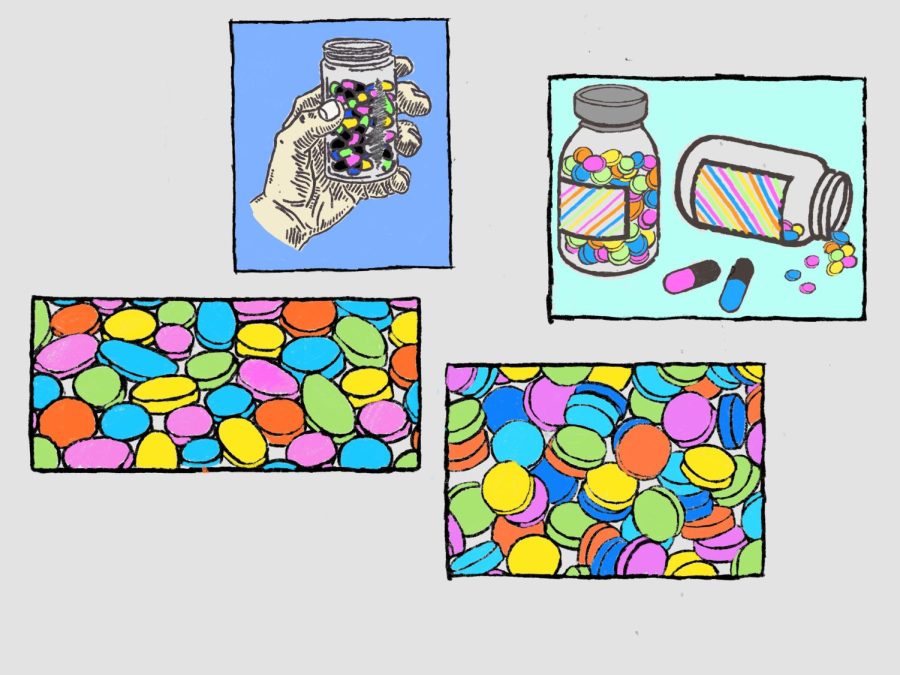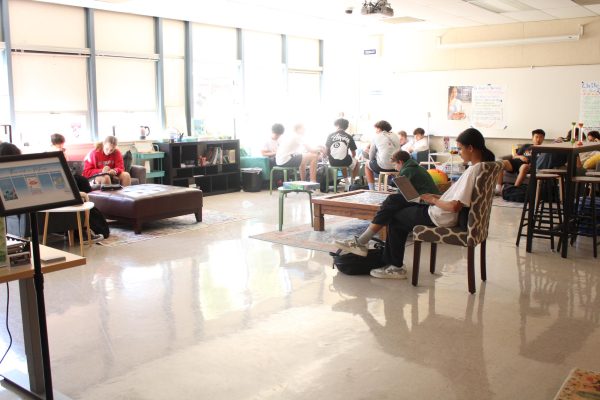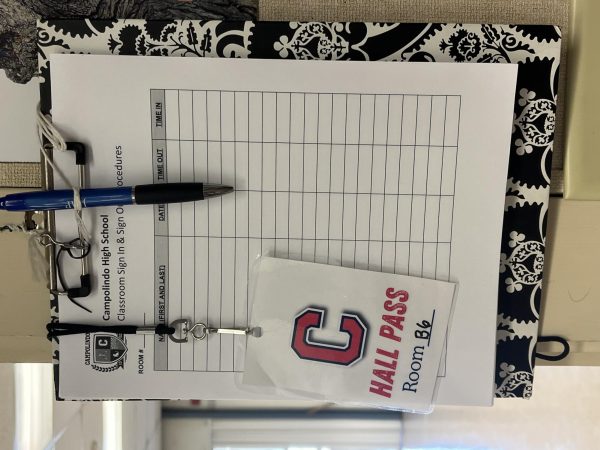Fentanyl Crisis Spurs Conversations Around Drug Use
Fentanyl can be hidden in all kinds of forms.
In light of a recent fentanyl-related drug overdose at Acalanes High School on January 13, conversations regarding student drug use have increased. The topics of these conversations have included ways to spot signs of intoxication, questions as to why students engage with drugs, and information on how to perform life-saving measures in the event of an overdose.
Drug use happens at Campo, most notably the use of marijuana. The risk of having marijuana laced with fentanyl is high, especially for regular users. According to the Center for Disease Control (CDC), 37% of high school students self-reported trying the drug at least once in their lifetime. It’s common for students to even attend class while intoxicated, according to an anonymous junior. “I notice when other people come to my classes that I’m in, the people that I’m sitting next to, I can tell their eyes are glossy and they just don’t really know what’s happening,” they said.
School Nurse Julie Mah is aware of how much marijuana is “easily and readily available” for students. “You can find it pretty much anywhere,” she said. “Kids are under so much pressure, pressure to perform and do good that they’re looking for ways to enhance that and unfortunately, they’re turning to drugs to try and figure it out.”
The anonymous junior listed several other students able to supply marijuana for them, noting that edibles and pens were the more common forms sold.
“Fentanyl overdosing has become very, very high throughout all age groups but mostly in the age group between…16 to 20 year olds,” said Mah. Statistics from the CDC show that in 2021, over 71,238 people in the US were predicted to have died due to a fentanyl overdose. This is up from 57,834 deaths in 2020.
Although many are aware of the potentially dangerous outcomes of overdosing on fentanyl there is still widespread use among students. This poses the question: despite the risks, why do people do it?
The anonymous junior said, “I’ve been doing it for like a year. At first it was just low milligram edibles, because I just want to have fun. I like doing something different from everyday life. It’s like a break.” Although stress accounts for some of it, a main factor was finding “happiness,” for the junior. In reference to the student who overdosed at Acalanes, they realized “it could’ve been me just as easily.”
According to Wellness Intake Specialist Liana Holcomb McCann, to help students struggling with addiction, the Wellness Center offers optional “brief intervention,” led by trained professionals, as well as “quit kits” supplied by the Contra Costa Office of Education. These kits offer a number of distractors for those struggling, including chewing gum, fidget toys, and anxiety rings.
When processing a staff meeting regarding the risk of fentanyl and other drugs on February 1, Choir Teacher Mark Roberts found it hard to process “the reality of how lethal and omnipresent fentanyl and some of those really dangerous additives are,” and that “[the meeting] helped me to have a discussion with…my next class about it.”
At the meeting, the medication Naloxone, or Narcan, was introduced as a life-saving medication available on campus, able to reverse or reduce the effects of an opioid overdose and save lives. Mah noted that “in the event of somebody finding a student unresponsive anywhere on campus, there’s a phone number to call that directly runs to here in the office and then they let us know and we grab the Narcan and we go.” With that, there was also an optional meeting that staff could attend on February 3 that would teach them how to administer Narcan that many chose to attend.
Although Roberts didn’t attend the optional meeting, he “feels comfortable and confident” about the resources available on campus.
In a message of advice to students, Roberts emphasized “the reality that any drug could be laced, and if it doesn’t come directly from a pharmacy, there’s just no way to know if someone’s tampered with it, or if it’s not what you think you’re getting…it’s kitschy to say that one pill can kill because it rhymes, but it’s true.”
Your donation will support the student journalists of Campolindo High School's The Claw. Your contribution will allow us to produce more issues and cover our annual website hosting costs.

Senior Yasmine Chang spends her free time writing short stories and poetry, drawing on her love of reading and music.
Chang gains inspiration from these...

(she/her)
Senior Venus Senanayake has lived in Moraga for 5 years. Prior to moving here when she was 9, she lived in Concord, and Walnut Creek.
Senanayake...




